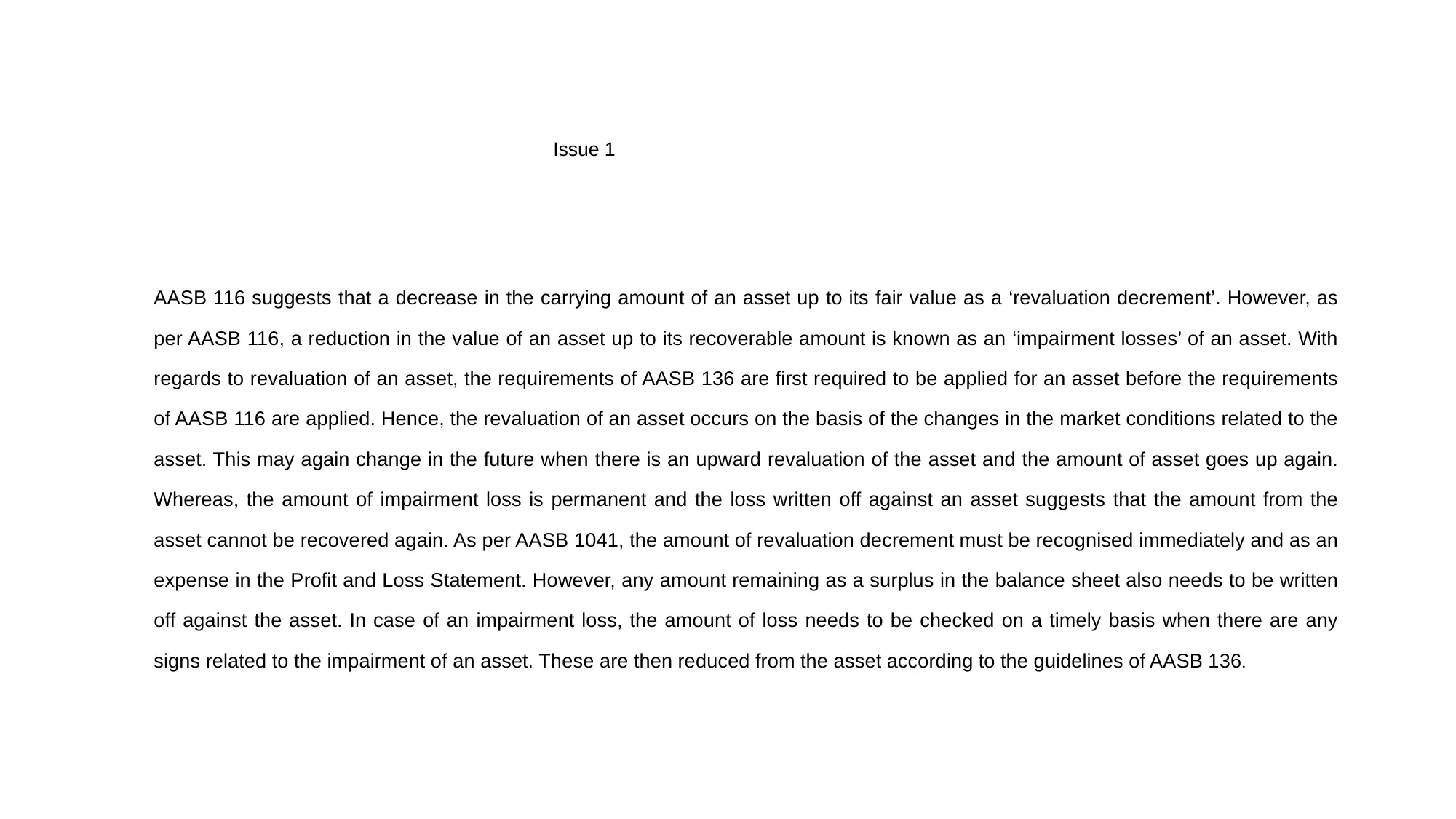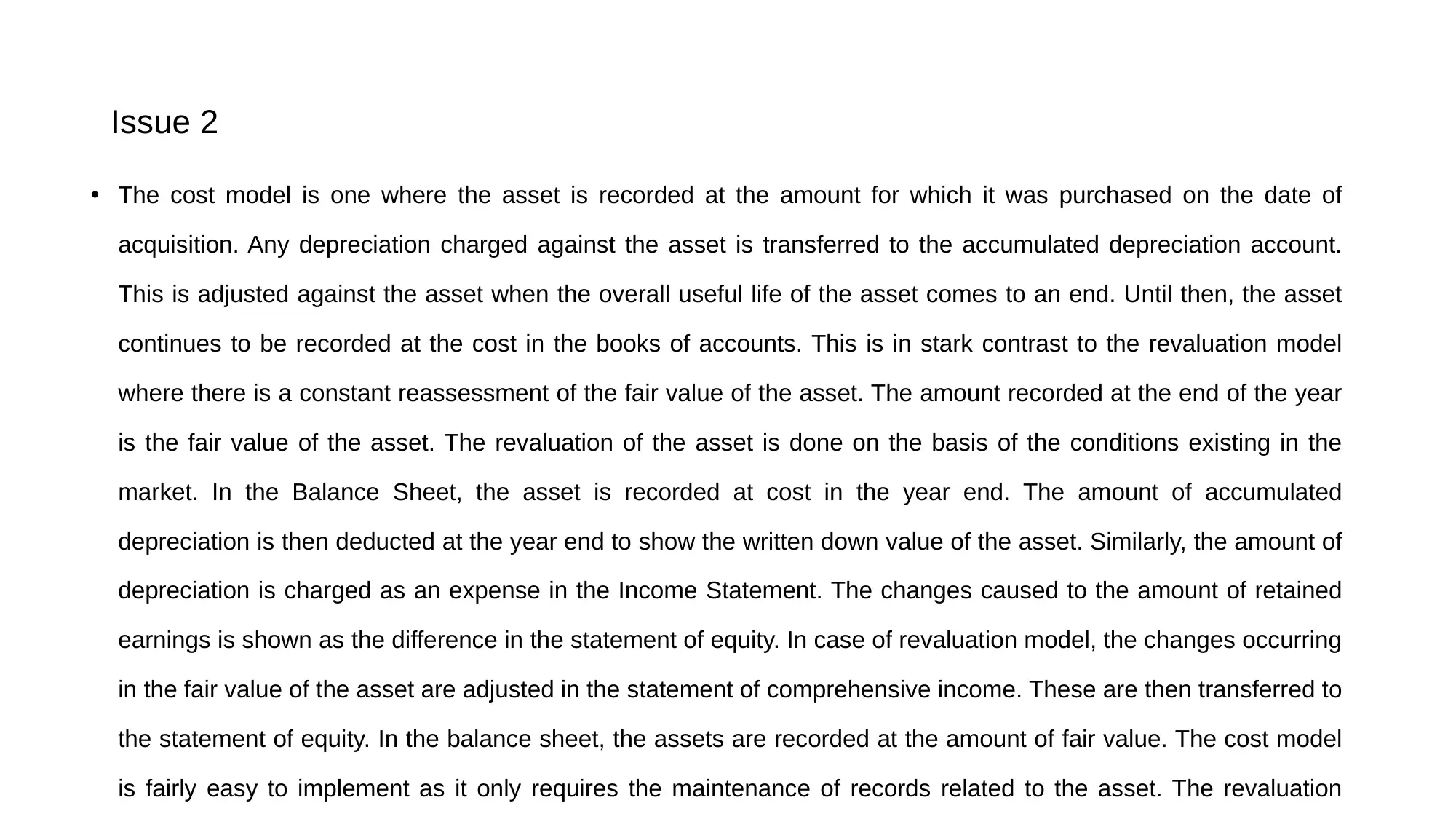Asset Revaluation and Impairment: A Comparison of AASB Standards
VerifiedAdded on 2022/09/26
|2
|687
|25
Report
AI Summary
This report provides a comprehensive analysis of asset valuation methods under AASB standards, specifically focusing on AASB 116 and AASB 136. It differentiates between asset revaluation and impairment losses, highlighting the circumstances under which each is applied and the accounting treatments involved. The report also contrasts the cost model with the revaluation model, detailing how assets are recorded, depreciated, and presented in financial statements under each method. It explores the implications of each model on financial reporting and provides insights into the advantages of the revaluation model for modern businesses, particularly those in growth stages. The report concludes by emphasizing the importance of accurately reflecting asset valuations to ensure informed decision-making and effective asset management.
1 out of 2








![[object Object]](/_next/static/media/star-bottom.7253800d.svg)